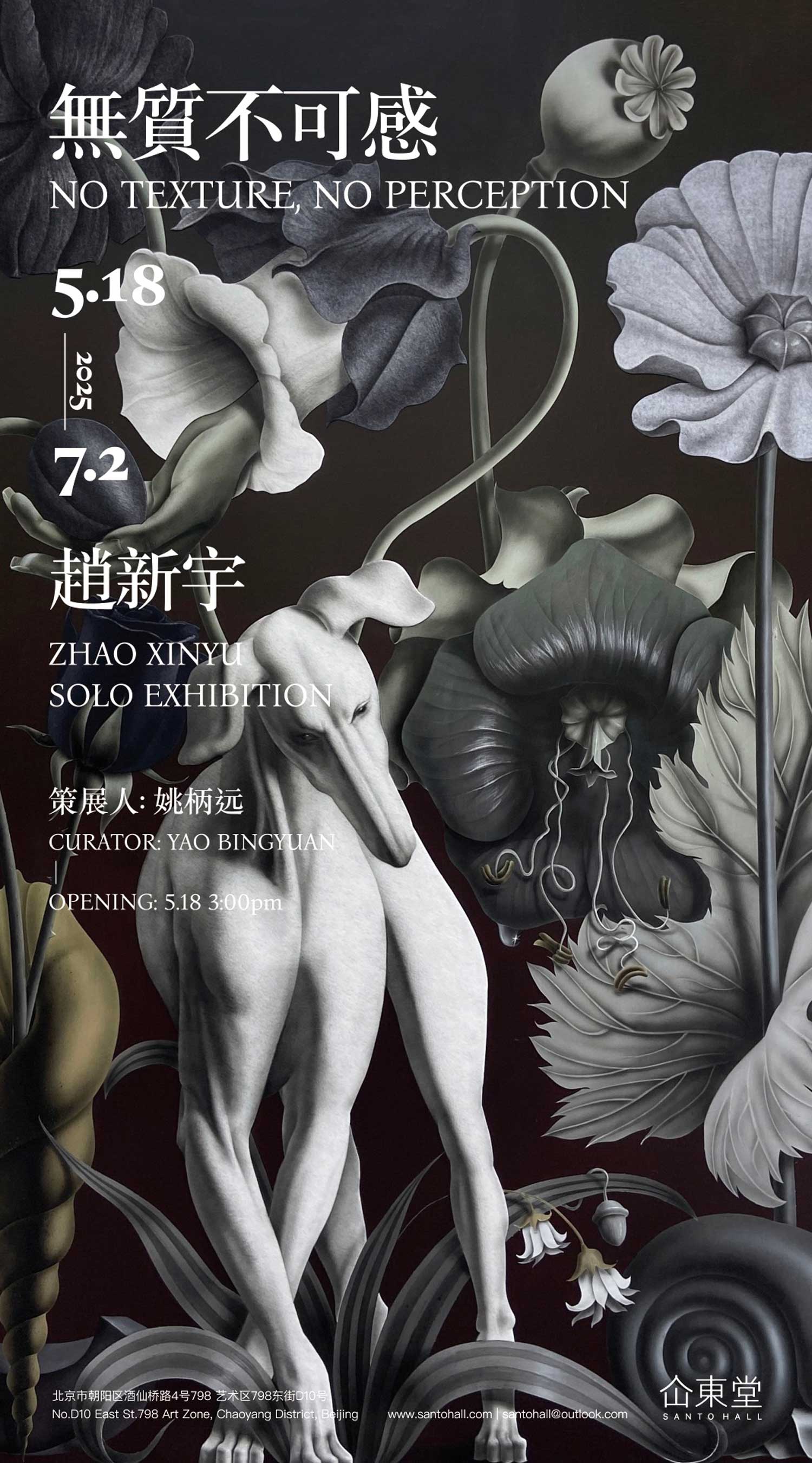展期 Period:
2025.5.18—2025.7.2
艺术家 Artist:
策展人 Curator:
地点 Venue:
仚東堂 Santo Hall(北京798)
前言 Introduction:
图像挣脱符号的阐释惯性,成为纯粹感知的实验室。在熟悉与异样之间,在质感与情绪之间,在柔性与锋利之间,建立起一种持续拉扯的张力关系。赵新宇的画面正是从这样的地带出发,构建出一种失温与秩序并存的绘画语言。
毛毡是赵新宇持续使用的重要媒介之一。刀锋所刻的痕迹与喷涂的覆盖,使毛毡从温暖的象征蜕变为冷峻的异质载体。在触觉与视觉的交织中,柔性材料被赋予一种德里达式的“补充性暴力”,其原有的属性在材料的辩证中逐步瓦解。与此同时,甜品在赵新宇的作品中抽离出原有的感官经验,转化为一种表面精致却语义悬置的图像结构。它不再通向愉悦本身,而作为愉悦机制的空壳被加以显影——一种由感官刺激诱发的心理幻觉,短暂、强烈,却无法确认其真实根源。奶油裱花与自然花卉缠绕交叠,经由剪贴与嵌合构成表面上的视觉繁复,但其甜美的形象之下,始终潜伏着不确定的情绪波动与知觉偏差。
本次展览延续了艺术家既有的创作脉络,同时在结构与语言上显露出新的转向。画面的形式语言愈加精密与复杂,色彩则简化为黑、白、灰三种基调。瓦解了情绪化的引导路径,将视觉意向锚定于结构本身。器官意象——心脏、头骨,以及放大的人体局部——不再承担叙事性角色,而以一种“不速之客”的方式闯入画面。它们既不完整,也不指向具体情境,却精准地制造出一种心理扰动。这种“意图未明”的突兀入侵,在视觉上制造出陌生感与间离感,引发观者对自身感知与情绪反应的微妙察觉。
The image breaks free from the inertia of symbolic interpretation, transforming into a laboratory for pure perception. Tension unfolds in the in-between—between the familiar and the strange, between texture and emotion, between softness and sharpness. It is from this zone of sustained pull that Zhao Xinyu constructs a pictorial language in which detachment and order coexist.
Felt has remained one of Zhao Xinyu’s primary materials. Scars left by the blade and layers of sprayed pigment strip the felt of its warmth, refashioning it into a cold and alien carrier. In the intertwining of tactile and visual, this soft material is subjected to what Derrida might call a “supplementary violence”—its original properties gradually dissolved through a material dialectic. At the same time, desserts in Zhao Xinyu’s work are extracted from their sensory connotations and reframed as visually refined but semantically suspended structures. They no longer point to pleasure itself, but become hollowed mechanisms of pleasure—manifestations of sensory illusions: brief, intense, and detached from any verifiable origin. Icing florals intertwine with natural blooms, collaged and embedded into visually dense surfaces. Beneath this sweetness, however, lies a persistent undercurrent of emotional fluctuation and perceptual deviation.
This exhibition continues artist's established trajectory while revealing a new turn in both structural and pictorial language. The compositions have grown increasingly precise and intricate, while the color palette is reduced to a stark triad of black, white, and grey. The emotional cues of earlier works are stripped away, anchoring visual intention more directly in structure itself. Organ imagery—hearts, skulls, and magnified bodily fragments—no longer serve narrative functions but erupt into the image as uninvited guests. They are incomplete, untethered to any specific context, and yet generate a precise psychological pressure. These abrupt and ambiguous intrusions produce a sense of estrangement and aesthetic distance, prompting the viewer to confront subtle shifts in their own sensory and emotional responses.

